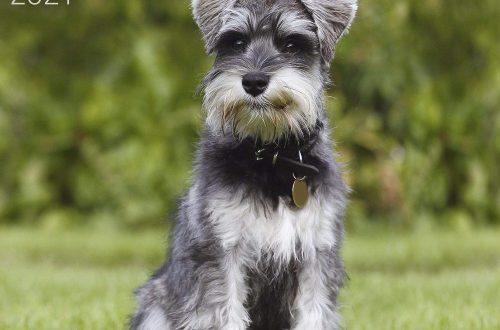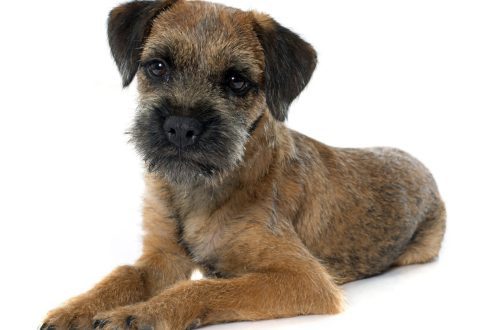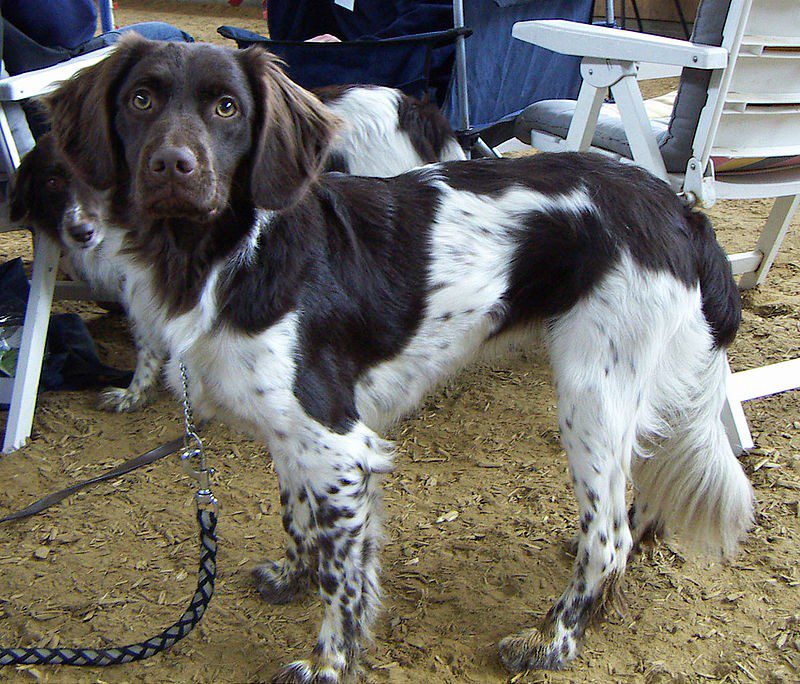
Stabyhoun
Contents
Characteristics of Stabyhoun
| Country of origin | Holland |
| The size | Average |
| Growth | 47–53 cm |
| Weight | 18–23 kg |
| Age | 10–15 years |
| FCI breed group | Not recognized |
Brief information
- Possess excellent working qualities;
- Easily trainable;
- Excellent companions;
- Distrustful of strangers.
Origin story
The homeland of the Stabyhoons is the northern province of Holland (Netherlands) – Friesland. Stabyhoons are farm dogs, they were originally bred as multifunctional helpers, and not exclusively game hunters. Representatives of the breed were used to hunt foxes, small fur-bearing animals and birds, and also guarded farms, helped to collect and graze livestock and served as faithful companions to the owners.
The history of the origin of this breed is difficult to trace. The Stabyhoon is believed to be a sister breed to the Wetterhoon . Presumably, the ancestors of the Stabyhoons are French spaniels and the Drenthe partridge dog . The breed was practically lost during World War II. However, in 1947 the Dutch Association for Staby and Wetterhounen (Dutch Association for Staby and Wetterhounen) was formed, which focused its main efforts on preserving the unique Friesian breeds.
Description
Stabyhoons are harmonious, proportionately built dogs with fairly long muscular legs, a broad chest, a strong loin and croup.
The hocks of typical representatives of the breed are flexible, strong, not turned out, not overwhelmed. The hind legs spring well on the run. The head of the Stabyhoon has a broad forehead, a smooth but distinct stop, and the length of the muzzle is equal to the length of the skull. The ears are located on the sides of the head and hang down. The standard specifies three colors: black and white, brown and white and red and white (red and white). Most often there are black dogs, while there are practically no red stabyhoons. Depending on the color, the eyes of dogs are allowed from dark brown to light brown.
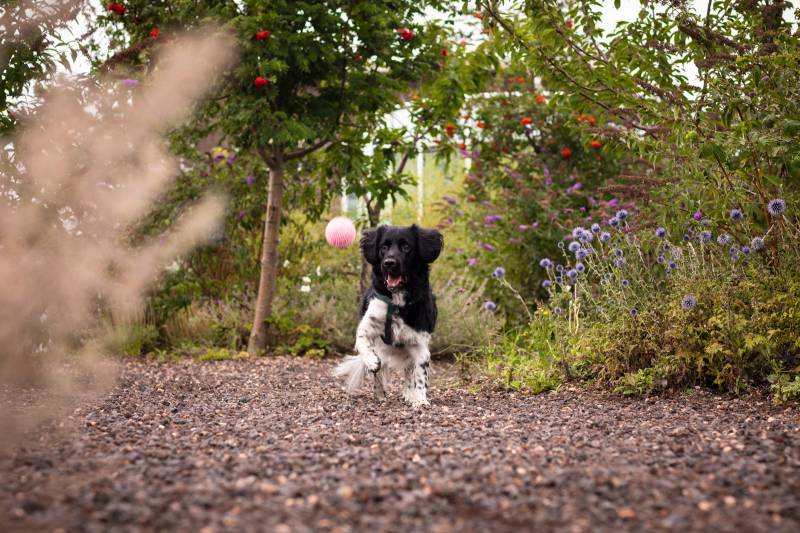
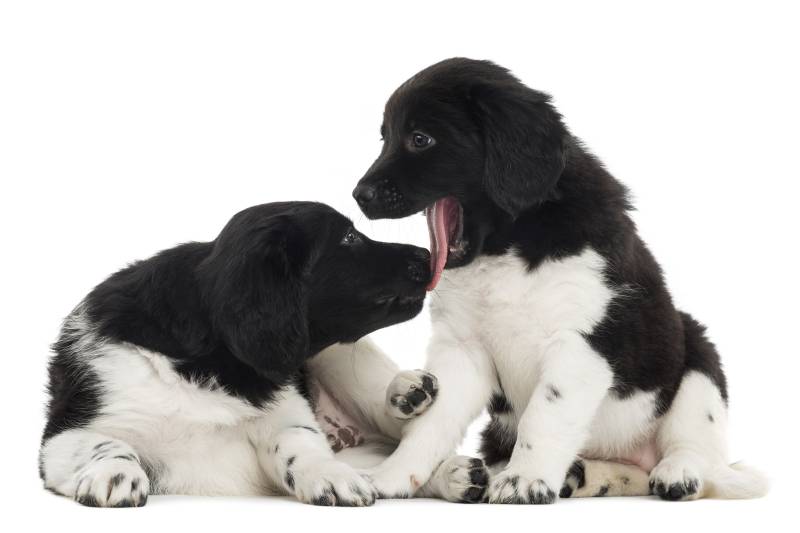
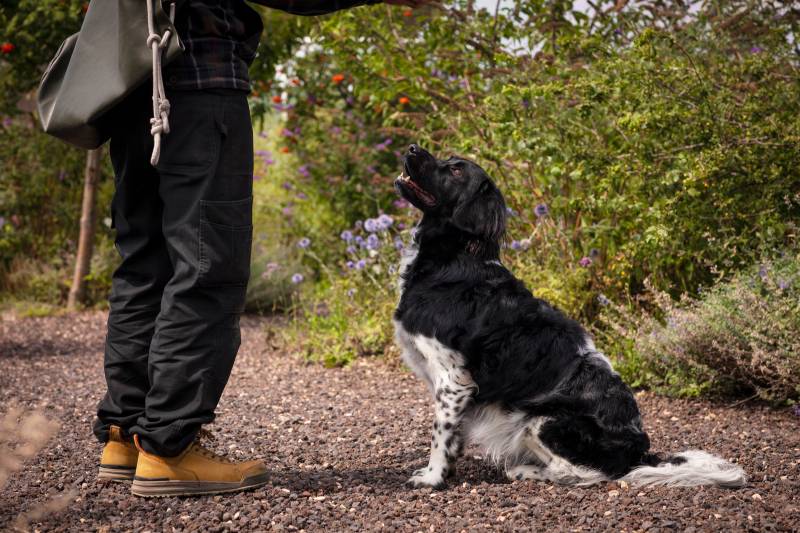
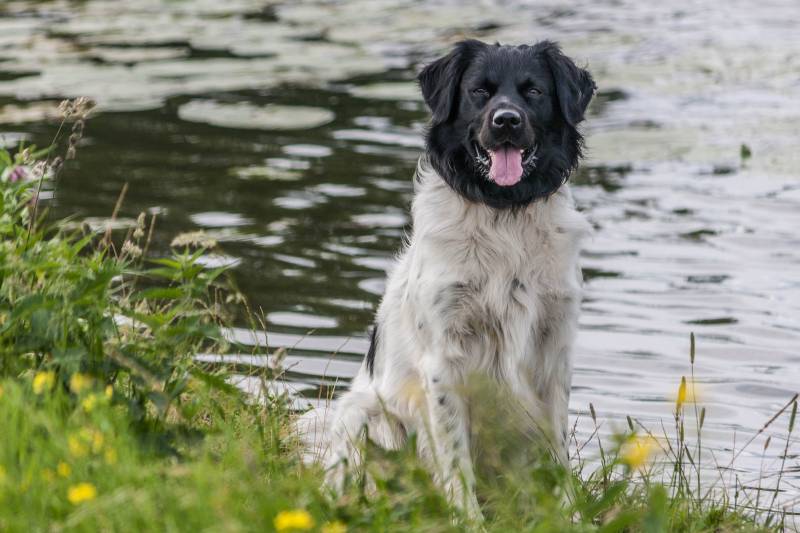
Typical representatives of the breed should have a long guard hair, close fitting and elastic, with a dewlap on the body and tail, as well as a soft thick undercoat, which perfectly protects the dogs from cold and wind and does not allow getting wet in the rain. At the same time, wavy hair is permissible only in adult dogs and only in the croup area. The “decorator” on the stomach and paws should be even. The tail of the Stabyhoon should reach to the hock. At rest, the tail is lowered to the ground and carried freely.
Character
Stabyhoons are not only excellent hunters with excellent flair and endurance, but also wonderful companions and guards. Thanks to their intelligence, docile and easy nature, these dogs are very easy to train and are able to master various types of training . They get along well with children and are always happy to play with them. However, they are extremely distrustful of strangers and are ready to protect their family. When raising a puppy of the Stabyhoon breed, consistency is important, training should be carried out without trying hard pressure on the animal, without screaming, swearing, and even more so without beating, otherwise there is a risk that the dog will close in on itself.
Stabyhoun Care
Representatives of the breed are quite healthy dogs and do not require any special conditions or a long selection of food. However, the stabyhoons have a weak point – these are the ears. Since they are lowered down and deprived of constant ventilation, inflammatory processes may occur. Owners are advised to regularly inspect the ears of their pets in order to have time to take action in time and stop the disease at the initial stage.
It is also necessary to comb out the dog’s coat, especially during shedding.
How to Keep
They can live both in a warm aviary and in an apartment (subject to the rules of long-term walking and hunting or training trips). But a country house with a plot is, of course, an ideal option.
Price
The Stabyhoon is one of the rarest breeds, and there are practically no representatives of it outside of Holland. Despite the fact that these dogs perfectly combine the traits of both hunters and wonderful companions, getting a puppy will be a problem. At a minimum, you will have to organize the delivery of a puppy from Holland, but, most likely, you will have to go there yourself and communicate with the breeders personally, which, of course, will affect the price of a pet.
Stabyhoun – Video




